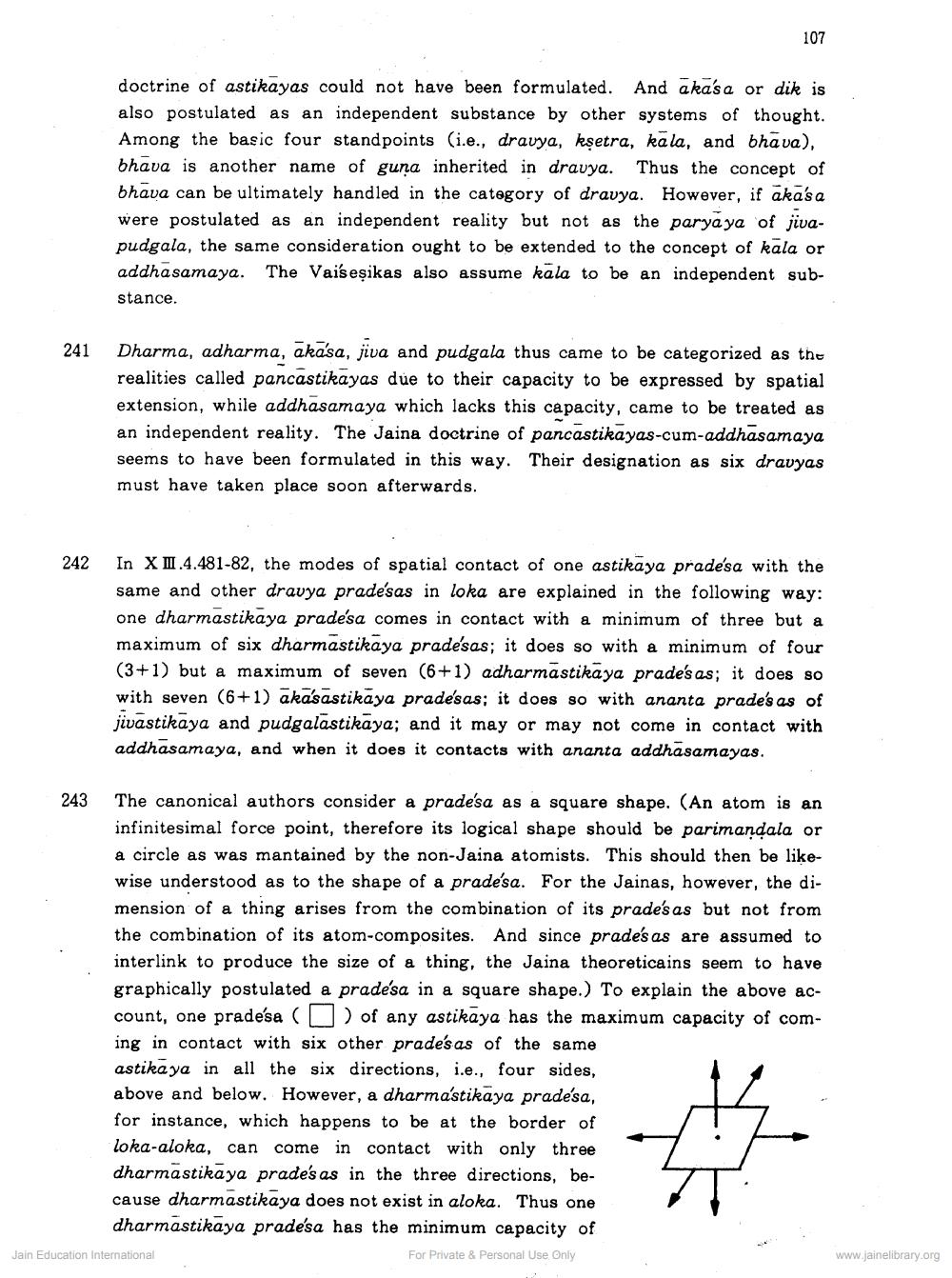________________
107
doctrine of astikayas could not have been formulated. And aka'sa or dik is also postulated as an independent substance by other systems of thought. Among the basic four standpoints (i.e., dravya, kşetra, kala, and bhava), bhava is another name of guna inherited in dravya. Thus the concept of bhava can be ultimately handled in the category of dravya. However, if aka's a were postulated as an independent reality but not as the parya ya of jivapudgala, the same consideration ought to be extended to the concept of kala or addhasamaya. The Vaiseșikas also assume kala to be an independent substance.
241
Dharma, adharma, akasa, jiva and pudgala thus came to be categorized as the realities called pancastikayas due to their capacity to be expressed by spatial extension, while addhasamaya which lacks this capacity, came to be treated as an independent reality. The Jaina doctrine of pancastikayas-cum-addhasamaya seems to have been formulated in this way. Their designation as six dravyas must have taken place soon afterwards.
242
In X 1.4.481-82, the modes of spatial contact of one astikaya pradesa with the same and other dravya prade'sas in loka are explained in the following way: one dharmastikaya pradesa comes in contact with a minimum of three but a maximum of six dharmastikaya pradesas; it does so with a minimum of four (3+1) but a maximum of seven (6+1) adharmastikaya prade's as; it does so with seven (6+1) akasastikaya pradesas; it does so with ananta prade's as of jivastikaya and pudgalastikaya; and it may or may not come in contact with addhasamaya, and when it does it contacts with ananta addhāsamayas.
The canonical authors consider a prade'sa as a square shape. (An atom is an infinitesimal force point, therefore its logical shape should be parimandala or a circle as was mantained by the non-Jaina atomists. This should then be likewise understood as to the shape of a prade'sa. For the Jainas, however, the dimension of a thing arises from the combination of its prade's as but not from the combination of its atom-composites. And since prades as are assumed to interlink to produce the size of a thing, the Jaina theoreticains seem to have graphically postulated a prade'sa in a square shape.) To explain the above account, one prade'sa (D) of any astikaya has the maximum capacity of coming in contact with six other prade's as of the same astikaya in all the six directions, i.e., four sides, above and below. However, a dharma'stikaya pradesa, for instance, which happens to be at the border of loka-aloka, can come in contact with only three dharmastikaya prade's as in the three directions, because dharmastikaya does not exist in aloka. Thus one
dharmastikaya prade'sa has the minimum capacity of Jain Education International
For Private & Personal Use Only
www.jainelibrary.org




